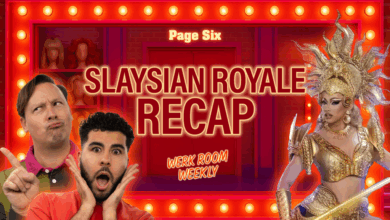Wholesale inflation unexpectedly fell in August, teeing up Fed for interest rate cut next week

Wholesale prices unexpectedly fell in August as producer inflation came in far below estimates, teeing up the Federal Reserve to slash interest rates next week.
The Producer Price Index, which measures final demand goods and services prices, declined 0.1% in August – significantly below estimates of a 0.3% rise and a heated 0.7% pace in July, the Bureau of Labor Statistics said Wednesday.
Over the past 12 months, the PPI rose 2.6% in August.
Excluding volatile food and energy prices, core PPI also fell 0.1% in August. The core figure is up 2.8% on a yearly basis.
President Trump was quick to slam Fed Chairman Jerome Powell after the tame inflation report, as the Fed has held off on cutting rates since December 2024, citing uncertainty around tariffs.
“Just out: No Inflation!!! ‘Too Late’ must lower the RATE, BIG, right now. Powell is a total disaster, who doesn’t have a clue!!!” Trump wrote in a post on Truth Social.
Traders are now placing 100% odds on an interest rate cut at the Fed’s meeting on Sept. 17, according to CME FedWatch, which tracks 30-Day Fed Funds futures prices.
The likelihood of a larger, half-point cut even jumped to 10% on Wednesday. Odds of a quarter-point cut reached 90%.
“Wednesday’s PPI is exactly the kind of report that the Federal Reserve was hoping for. Tame inflation data gives the Fed the all clear to cut rates later this month,” Robert Ruggirello, chief investment officer at Brave Eagle Wealth Management, told The Post.
“While there is volatility in inflation data, we believe that inflation is yesterday’s story as the Fed is more focused on the softening labor market.”
Services prices dropped 0.2% in August, helping to drive the headline figure lower. Prices for trade services fell 1.7%, with machinery and vehicle wholesaling plunging 3.9%.
Goods prices increased 0.1%. Final demand food costs jumped 0.1%, but energy slid 0.4%.
Some imported goods showed evidence of a tariff impact. Tobacco products jumped 2.3% in August. Coffee prices rose 6.9%, for a 33.3% increase over the past 12 months.
But overall, wholesalers and retailers have been slow to pass along the cost of tariffs to consumers.
“This could be due to foreign suppliers discounting to maintain market share, to weak demand in the US, or to businesses waiting to pass on costs until they have clarity about where tariff rates settle out,” Bill Adams, chief economist for Comerica Bank, said in a note Wednesday.
“Other factors like lower energy prices and modest domestic demand are slowing the passthrough of tariff prices to the real economy.”
Trump has long badgered the Fed to slash rates, arguing his tariffs will not stoke inflation.
During his Jackson Hole speech last month, Powell hinted at a possible rate cut in September as concerns about weakness in the labor market override inflation fears.
The BLS on Tuesday revised downward the number of jobs created during the 12 months ended in March by nearly 1 million – the biggest downward adjustment since 2000.
It signaled the labor market started at an even softer point than known before Trump took office.
Meanwhile, average payroll growth notched just 29,000 in June, July and August – below the breakeven level required to keep unemployment steady.
Credit to Nypost AND Peoples



